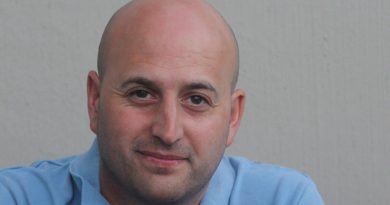Fewer than 4 in 100 men accepted to be sperm donors, finds study

Fewer than 4 in 100 men who apply to be sperm donors reach the end of the process and have samples frozen and released for treatments, according to a new study.
A European team of researchers led by the University of Sheffield, worked with the world’s largest sperm banks, Cryos International, to map the outcome of over 11,700 men who applied to be sperm donors.
The findings, published in the journal Human Reproduction, show that more than half of the men (54.91%) who applied to be donors at Cryos in Denmark and the U.S. withdrew from the program before having samples released for use.
Nearly a fifth of applicants (17.41%) were rejected because of a health issue or because they were a carrier for a genetic disease or had an infectious disease which could not be treated.
The data also showed just over one in 10 of the applicants (11.71%) failed a screening questionnaire about their lifestyle and another one in 10 (11.20%) were rejected because their sperm quality was not good enough.
Lead author of the study, Professor Allan Pacey, Professor of Andrology and Head of the Department of Oncology and Metabolism at the University of Sheffield, said, “To our knowledge, this is the largest study of sperm donor applicants outside China and given that the U.K. relies so heavily on imported sperm from the U.S. and Denmark it is important for us to understand the recruitment processes there and reassure ourselves that they are safe as well as see if there is anything we can do to improve them.”
Recent figures from the Human Fertilization and Embryology Authority have shown that more than half of the new sperm donors registered in the U.K. were from imported sperm, mostly from sperm banks like Cryos in the U.S. and Denmark.
Since 2006, it has been illegal in the U.K. to use sperm from donors who are unwilling to be identified to any people born from their donations. Therefore, in the new study, Professor Pacey and the team looked at how many of the donors at Cryos agreed to be identifiable compared to those that did not.
They found that more than four in 10 donor candidates (41.27%) initially agreed to be identifiable, and it was more common for applicants in Denmark to agree to waive their anonymity than applicants in the U.S.
Interestingly, the team found that as the screening and donation process continued (men donate regularly for many months) more of the donors who initially wanted to be anonymous, agreed to become identifiable.
Professor Pacey added, “The study with Cryos highlights how hard it is to become a sperm donor. It’s not like blood donation where once it’s done you can have a cup of tea and go home. Sperm donation is a regular commitment with lots of screening and regular testing as well as life-long implications for the donor if any children are born from their sample.
“What’s particularly fascinating is that more donors, who initially wanted to remain anonymous, were willing to be identifiable as the screening and donation process continued. This is particularly good news for patients in the U.K. undergoing fertility treatment, as it is a legal requirement for sperm donors to be identifiable to any children born from their donations.”
Dr. Anne-Bine Skytte, Medical Director at Cryos International said, “We are very grateful to Professor Pacey and the team for their in depth analysis of sperm donors which has already been very valuable in helping Cryos look at its recruitment process and try to make them more efficient.
“If we can recruit donors more easily then this will help keep costs down for patients in the U.K. and elsewhere who often buy donor sperm with their own money because it’s not funded by the NHS.”
To be accepted as a sperm donor in the U.K., men must be aged between 18 and 45 years old and be fit and healthy with good sperm quality. Donors undergo a range of screening tests for genetic conditions and infectious diseases as well as an analysis of their family medical history.
U.K. guidelines for sperm donor recruitment are published by the British Fertility Society and the recruitment and use of sperm donors in infertility treatments is regulated by the Human Fertilization and Embryology Authority.
More information:
Allan A Pacey et al, An analysis of the outcome of 11 712 men applying to be sperm donors in Denmark and the USA, Human Reproduction (2023). DOI: 10.1093/humrep/deac264
Journal information:
Human Reproduction
Source: Read Full Article



